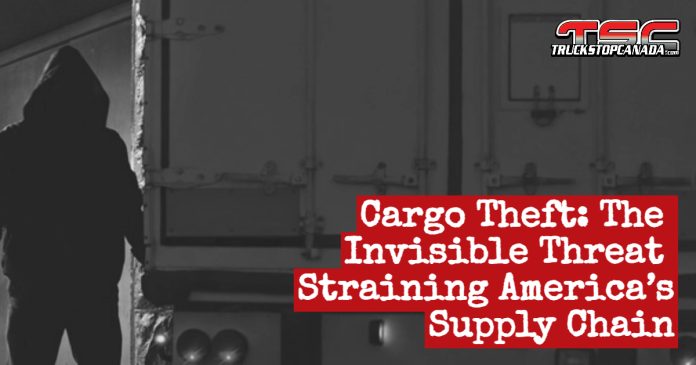Cargo theft is on the rise as well-organized criminal networks increasingly target the U.S. supply chain. According to a six-month investigation by CNBC, these groups are hitting trucks, warehouses, and rail cars across the country.
In 2024, nearly 3,800 thefts were reported—a 26% increase over the previous year. Experts estimate that annual losses may approach $1 billion, though officially reported damages hover around $455 million.
A Shift Toward Strategic Cargo Theft
The threat is no longer limited to physical heists. Criminals are now turning to “strategic theft,” using fake documents and impersonating legitimate carriers to fraudulently divert entire truckloads. This form of theft accounted for a third of all cargo thefts in 2024, up from just 8% in 2020. These schemes often originate overseas and exploit vulnerabilities in logistics technology, making them difficult to trace and stop.
The consequences for businesses are substantial. Companies such as Lacoste, Meta, and Lululemon have seen disruptions in their supply chains, leading to delivery delays, product shortages, and unmet customer demand. Barry Conlon, a transportation security expert, points out that thieves typically target perishable goods, consumer products, and electronics—commodities that are hard to track once stolen and easy to resell or destroy.
A Challenge to Catch the Criminals
Investigating these crimes is complicated, especially when fraudsters operate from abroad. Like identity theft, there is often no trail to follow. According to Jordan Graft, CEO of cybersecurity firm Highway, his company blocked over 914,000 fraud attempts last year—most originating from six countries: India, Mexico, Moldova, Pakistan, Serbia, and Uzbekistan. Many logistics companies point to the limited resources of the Federal Motor Carrier Safety Administration (FMCSA), which struggles to combat such sophisticated cybercrime.
To respond, companies are investing heavily in prevention. TQL, one of the largest freight brokers in the U.S., has spent $4 million on fraud detection technologies. DAT Freight and Analytics employs a 25-person team dedicated to monitoring suspicious activity on its platform. Highway also tracks suspicious changes to carrier profiles in real-time. Still, as tactics evolve, staying ahead of the fraudsters becomes increasingly complex.
Policymakers Step In
The severity of the situation has prompted legislative action. A bipartisan bill, the Combating Organized Retail Crime Act, would create a national coordination center within the Department of Homeland Security to combat cargo theft. Another proposal, the Household Goods Shipping Consumer Protection Act, would grant the FMCSA greater authority to impose civil penalties and tighten regulations on fraudsters. Until these measures are passed, shippers, brokers, and carriers must remain on high alert.
Canada Facing a Similar Surge in Cargo Theft
The cargo theft crisis is not limited to the United States. In Canada, Ontario accounted for 85% of reported cargo theft incidents in 2024. According to Truck News, electronics made up 31% of stolen cargo, followed by construction materials and auto parts (17% each), food and beverages (7%), and tobacco (7%). High-risk areas include unsecured parking lots, truck stops, and distribution centers.
Canada has also seen a rise in strategic theft, mirroring trends in the U.S. Criminals are using false identities, fraudulent paperwork, and even stolen trucks to gain unauthorized access to freight. A striking example occurred at Toronto’s Pearson Airport in April 2023, when thieves used falsified documents to steal over $20 million in gold and currency. In Quebec, there have been reports of individuals attempting to access secure transport yards with fake IDs or paperwork—further evidence that the threat extends nationwide.
This North American trend highlights the urgent need for enhanced security practices across the industry. Transport and logistics companies must adopt advanced tracking technologies, improve verification procedures, and provide robust training for staff and drivers to stay one step ahead of organized crime.
Read More :
No Patrolling by Contrôle Routier Québec’s Agents on Highways Until 2026?














